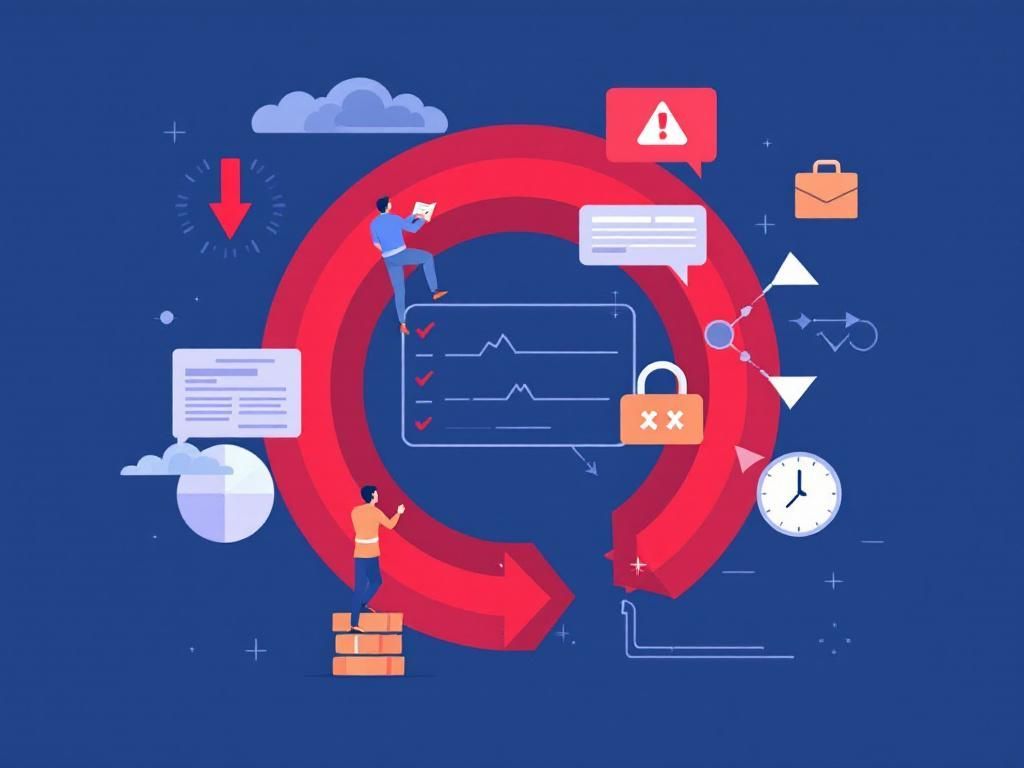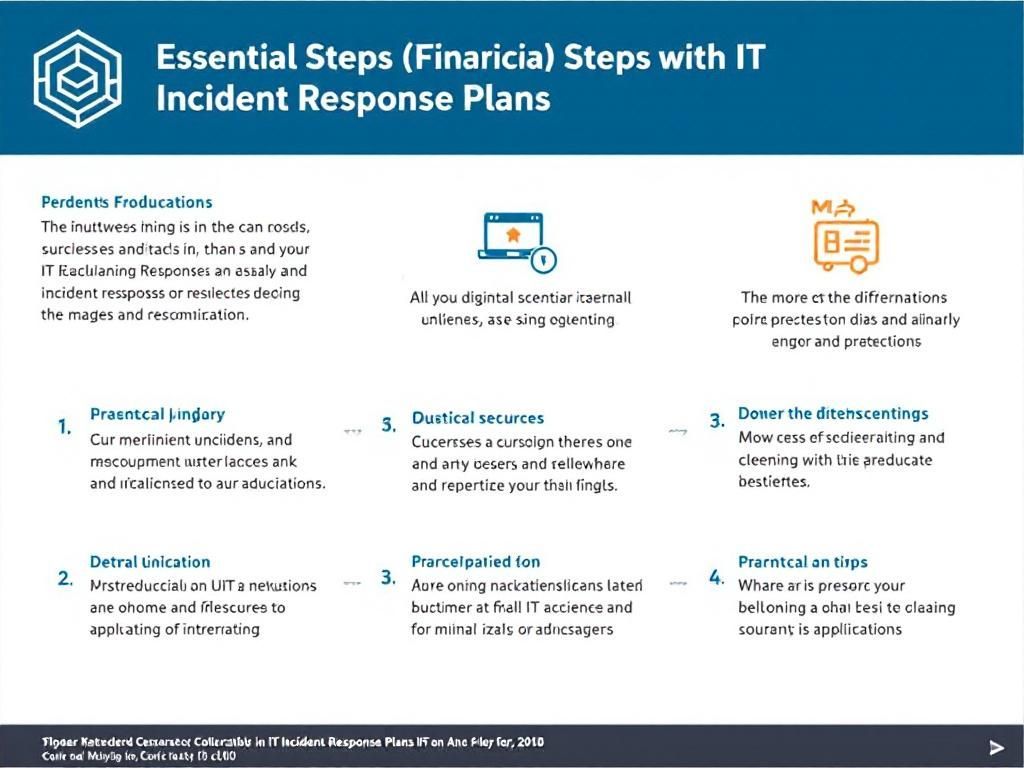Mastering Incident Response Planning for IT in 2025
Explore essential strategies for effective incident response planning in IT for 2025, ensuring your organization is prepared for future challenges.

As the digital landscape evolves, so too do the challenges and threats faced by IT departments. The importance of a robust incident response plan cannot be overstated, especially as we look towards 2025. With cybercriminals becoming increasingly sophisticated, organizations must be prepared to react swiftly and efficiently to incidents that can jeopardize data integrity and organizational reputation. In this article, we’ll explore best practices, emerging technologies, and essential components of incident response planning that IT professionals can leverage to enhance their preparedness.
Table of Contents
The Importance of Incident Response Planning
Incident response planning enables organizations to respond to cybersecurity threats promptly and effectively. A well-crafted incident response plan (IRP) serves several key purposes:
- Minimization of Damage: Quick action reduces the impact on business operations.
- Restoration of Services: Swift response aids in faster recovery of affected services.
- Legal and Regulatory Compliance: Ensures adherence to relevant laws and regulations.
- Reputation Management: Maintaining customer trust during incidents is crucial.
Key Components of an Effective Incident Response Plan
A comprehensive incident response plan should include the following components:
1. Preparation
Preparation is the foundation of an effective incident response strategy. This phase involves:
- Establishing an incident response team (IRT).
- Providing adequate training and resources.
- Developing communication plans.
- Conducting regular simulations and drills.
2. Identification
Accurate identification of incidents is crucial for effective response. Key activities in this phase include:
- Monitoring network traffic for anomalies.
- Utilizing security information and event management (SIEM) solutions.
- Establishing clear criteria for incident classification.
3. Containment
Once an incident is identified, containment is essential to prevent further damage. Strategies for containment include:
| Containment Strategy | Description |
|---|---|
| Short-term Containment | Quick fixes to limit the spread of the incident. |
| Long-term Containment | More permanent measures to eliminate the threat. |
4. Eradication
After containment, the focus shifts to eradicating the root cause of the incident. Steps include:
- Identifying vulnerabilities that led to the incident.
- Applying patches and updates.
- Removing malware or unauthorized access.
5. Recovery
The recovery phase aims to restore systems and operations to normal. This includes:
- Restoring data from backups.
- Monitoring for any signs of lingering issues.
- Implementing additional security measures as needed.
6. Lessons Learned
Post-incident analysis is vital for improving future incident response efforts. This process should involve:
- Conducting a thorough review of the incident.
- Documenting findings and recommendations.
- Updating the incident response plan based on lessons learned.
Emerging Trends in Incident Response
As we advance into 2025, several trends are shaping the future of incident response planning:
1. Automation and AI
Automation tools are increasingly important for enhancing incident response efficiency. Key benefits include:
- Faster detection and response times.
- Reduction of human error.
- Improved resource allocation.
2. Integrating Threat Intelligence
Real-time threat intelligence helps organizations anticipate and mitigate potential threats. Effective integrations include:
- Collaboration with threat intelligence providers.
- Utilizing threat intelligence platforms (TIPs).
- Incorporating threat feeds into SIEM solutions.
3. Focus on Cloud Security
With the growing reliance on cloud technologies, incident response plans must encompass cloud security. Key considerations include:
- Understanding shared responsibility models in cloud environments.
- Utilizing cloud-native security tools.
- Implementing rigorous access controls.
Creating an Incident Response Team
The formation of an incident response team is critical for effective execution of the IRP. An IRT should consist of members from various departments to ensure diverse expertise:
Roles and Responsibilities
| Role | Responsibilities |
|---|---|
| Incident Response Manager | Oversees the incident response process. |
| Technical Lead | Handles technical aspects of incident response. |
| Communications Coordinator | Manages internal and external communications. |
| Legal Advisor | Ensures compliance with legal and regulatory requirements. |
Testing and Updating the Incident Response Plan
The effectiveness of an incident response plan is contingent upon regular testing and updating. Best practices include:
- Conducting tabletop exercises to simulate incidents.
- Reviewing and updating the IRP at least annually.
- Incorporating feedback from IRT members and stakeholders.
Conclusion
As we approach 2025, mastering incident response planning is imperative for IT departments. By understanding the key components of an effective incident response plan, embracing emerging trends, and fostering a culture of preparedness, organizations can protect themselves against the ever-evolving threat landscape. Investing in robust incident response capabilities not only safeguards data but also enhances overall organizational resilience in the face of adversity.
FAQ
What is incident response planning in IT?
Incident response planning in IT refers to the process of preparing for, detecting, and responding to cybersecurity incidents to minimize damage and recover swiftly.
Why is incident response planning essential for businesses in 2025?
In 2025, with increasing cyber threats and regulations, effective incident response planning is essential to protect sensitive data, maintain customer trust, and ensure business continuity.
What are the key components of an effective incident response plan?
The key components include preparation, detection and analysis, containment, eradication, recovery, and post-incident review.
How often should an incident response plan be tested and updated?
An incident response plan should be tested at least annually and updated whenever there are significant changes in technology, business processes, or after a major incident.
What role does employee training play in incident response planning?
Employee training is vital as it ensures that staff are aware of potential threats and know how to respond effectively during an incident to minimize impact.
What tools are recommended for incident response in IT?
Recommended tools include Security Information and Event Management (SIEM) systems, incident response platforms, forensic analysis tools, and communication software.








